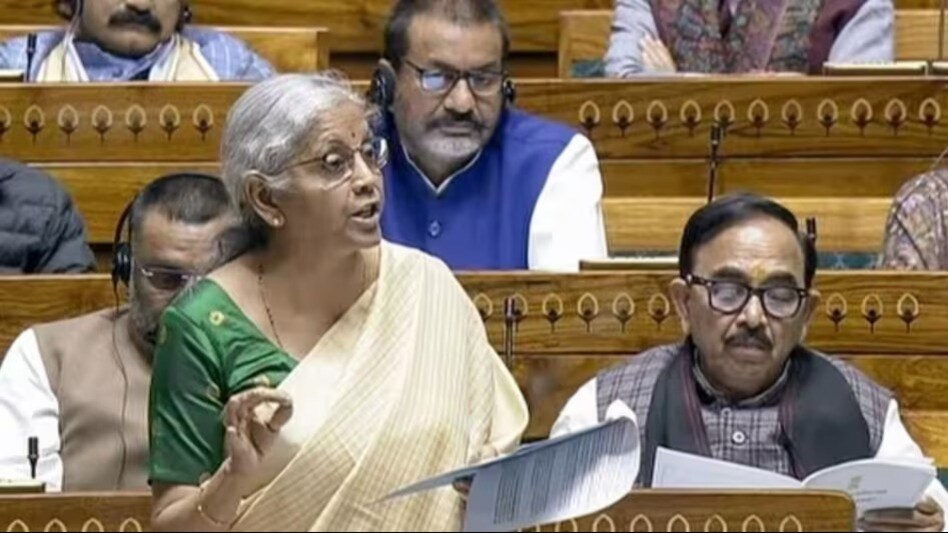 Finance Minister Nirmala Sitharaman
Finance Minister Nirmala Sitharaman
 Finance Minister Nirmala Sitharaman
Finance Minister Nirmala SitharamanFinance Minister Nirmala Sitharaman on Thursday tabled a 'White Paper', detailing the state of the economy during the Congress-led UPA government from 2004 to 2014. The paper states that the UPA government failed miserably to facilitate economic activities and created hurdles that held back the economy. "It basked in the after-glory of the lagged effects of the reforms of the Vajpayee-led NDA government and benign global conditions and proceeded to exploit the resultant fast economic growth for narrow political purposes without much concern for long-term economic consequences," the paper says.
Also read: Sensex, Nifty tank as RBI keeps lending rate unchanged; Paytm tumbles 10%; SBI jumps 4%
It further adds that the result was a mountain of bad loans, a high fiscal deficit despite much of it being hidden, a high current account deficit, double-digit inflation for five years which hit the pockets of many Indians, and membership of the club of "Fragile Five" in 2013. "They not only failed to impart dynamism into the economy but also robbed the economy of it such that our industrialists went on record stating that they would rather invest abroad than in India," it adds.
"To drive investors away is easy but to win them back is hard. The UPA government also demonstrated that it is easier to hurt the economy than it is to help it. They inherited a healthy economy and bequeathed an enfeebled one to us. We have restored its vitality. The box below captures the difference we could make in the last ten years and we hope to build on it in the next twenty-five years."
Also read: India @ 2030: India's journey to become $5 trillion economy will depend on the pace of reforms
From Healthy To Non-Performing Economy in 10 Yrs
The paper notes that the UPA government inherited a healthy economy ready for more reforms, but made it non-performing in its ten years. In 2004, when the UPA government began its term, the economy was growing at 8 per cent (with industry and services sector growth above 7 per cent each and a resuscitating agriculture sector growth above 9 per cent in FY04) amidst a benign world economic environment, it adds.
According to the paper, the Economic Survey of 2003-04 noted, "The economy appears to be in a resilient mode in terms of growth, inflation, and balance of payments, a combination that offers large scope for consolidation of the growth momentum with continued macroeconomic stability."
Inflation, Price Stability
The paper states that the UPA government, in its quest to maintain high economic growth by any means after the global financial crisis of 2008, severely undermined the macroeconomic foundations. According to economic observers, it adds, the economy reeled under profound mismanagement and indifference.
"One such foundation that was severely weakened by the UPA government was price stability," it says, adding that inflation raged between 2009 and 2014 and the common man bore the brunt. "High fiscal deficits for six years between FY09 and FY14 heaped misery on ordinary and poorer households. Over the five-year period from FY10 to FY14, the average annual inflation rate was in double digits. Between FY04 and FY14, average annual inflation in the economy was 8.2 per cent."
Bad Debts in the Banking System
The paper says that the banking crisis was one of the most important and infamous legacies of the UPA government. When the Vajpayee-led NDA government took office, the Gross Non-Performing Assets (GNPA) ratio in Public Sector banks was 16.0 per cent, and when they left office, it was 7.8 per cent.
"In September 2013, this ratio, including restructured loans, had climbed to 12.3 per cent largely because of political interference by the UPA government in the commercial lending decisions of public sector banks (Chart 2). Worse, even that high percentage of bad debts was an underestimate."
As per the paper, the banking crisis in 2014 was massive, and the absolute sum at stake was too large. Gross advances by public sector banks were only Rs 6.6 lakh crore in March 2004. In March 2012, it was Rs 39.0 lakh crore. "Further, not all problem loans were recognised. There was much under the hood."
According to a Credit Suisse report published in March 2014, the top 200 companies with an interest coverage ratio of less than one owed about Rs 8.6 lakh crore to banks. Nearly 44 per cent of those loans (Rs 3.8 lakh crore) were yet to be recognised as problem assets. That alone would have added another 6.7 per cent to the GNPA ratio. In 2018, in a written response to a Parliamentary Panel, a former Governor of the Reserve Bank of India, stated, "A larger number of the bad loans were originated in the period 2006-2008."
External vulnerability
India's external vulnerability shot up because of over-dependence on external commercial borrowings (ECB), the paper states, adding that during the UPA government's tenure, ECB rose at a compounded annual growth rate (CAGR) of 21.1 per cent (FY04 to FY14), whereas in the nine years from FY14 to FY23, they have grown at an annual rate of 4.5 per cent.
"No surprise, therefore, that our economy was in a vulnerable position in 2013 when the US dollar rose sharply. The UPA government had compromised external and macroeconomic stability, and the currency plunged in 2013. From its high to low, against the US dollar between 2011 and 2013, the Indian rupee plunged 36 per cent."